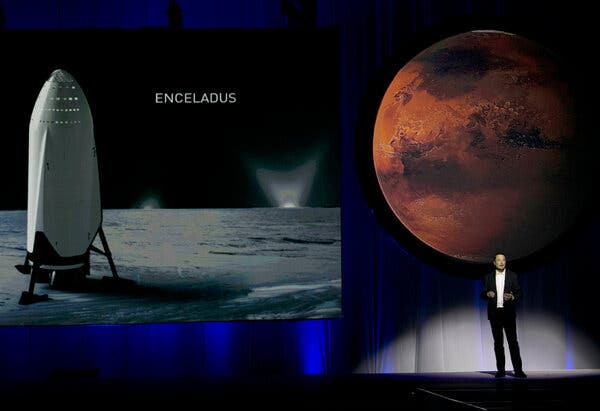For more than two decades, Elon Musk has focused SpaceX, his rocket company, on his lifelong goal of reaching Mars.
Over the last year, he has also ramped up work on what will happen if he gets there.
Mr. Musk, 53, has directed SpaceX employees to drill into the design and details of a Martian city, according to five people with knowledge of the efforts and documents viewed by The New York Times. One team is drawing up plans for small dome habitats, including the materials that could be used to build them. Another is working on spacesuits to combat Mars’s hostile environment, while a medical team is researching whether humans can have children there. Mr. Musk has volunteered his sperm to help seed a colony, two people familiar with his comments said.
The initiatives, which are in their infancy, are a shift toward more concrete planning for life on Mars as Mr. Musk’s timeline has hastened. While he said in 2016 that it would take 40 to 100 years to have a self-sustaining civilization on the planet, Mr. Musk told SpaceX employees in April that he now expects one million people to be living there in about 20 years.
“There’s high urgency to making life multi-planetary,” he said, according to a publicly posted video of his remarks. “We’ve got to do it while civilization is so strong.”
Mr. Musk has long tried to defy the impossible and has often managed to beat tough odds. But his vision for life on Mars takes his seemingly limitless ambitions to their most extreme — and some might say absurdist — point. No one has ever set foot on the planet. NASA doesn’t expect to land humans on Mars until the 2040s. And if people get there, they will be greeted by a barren terrain, icy temperatures, dust storms, and air that is impossible to breathe.
